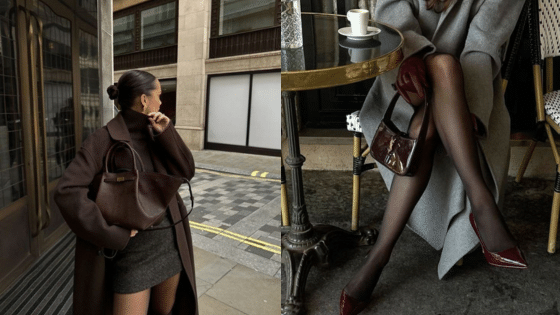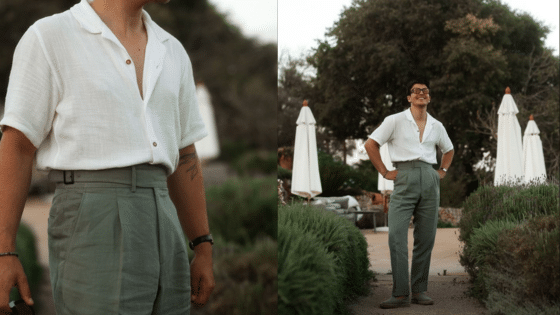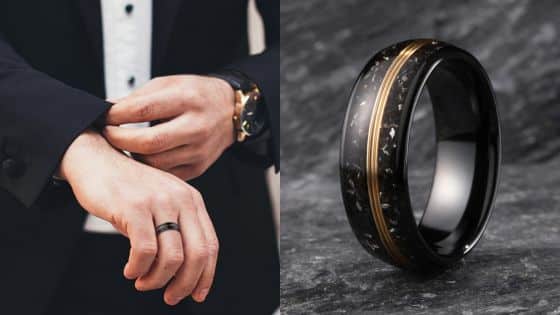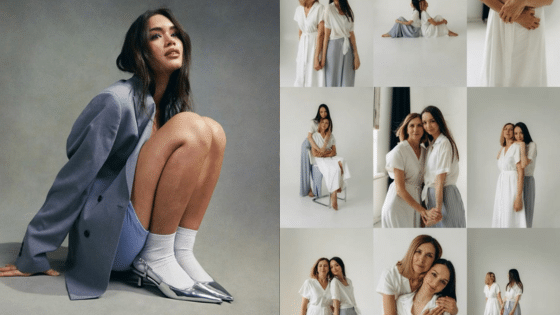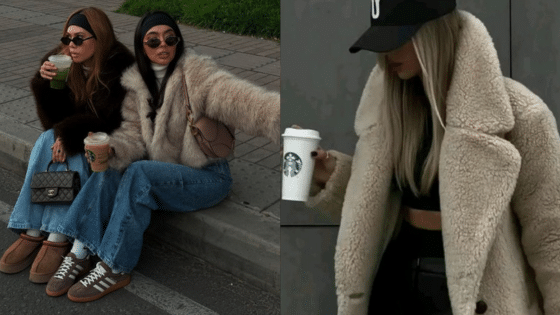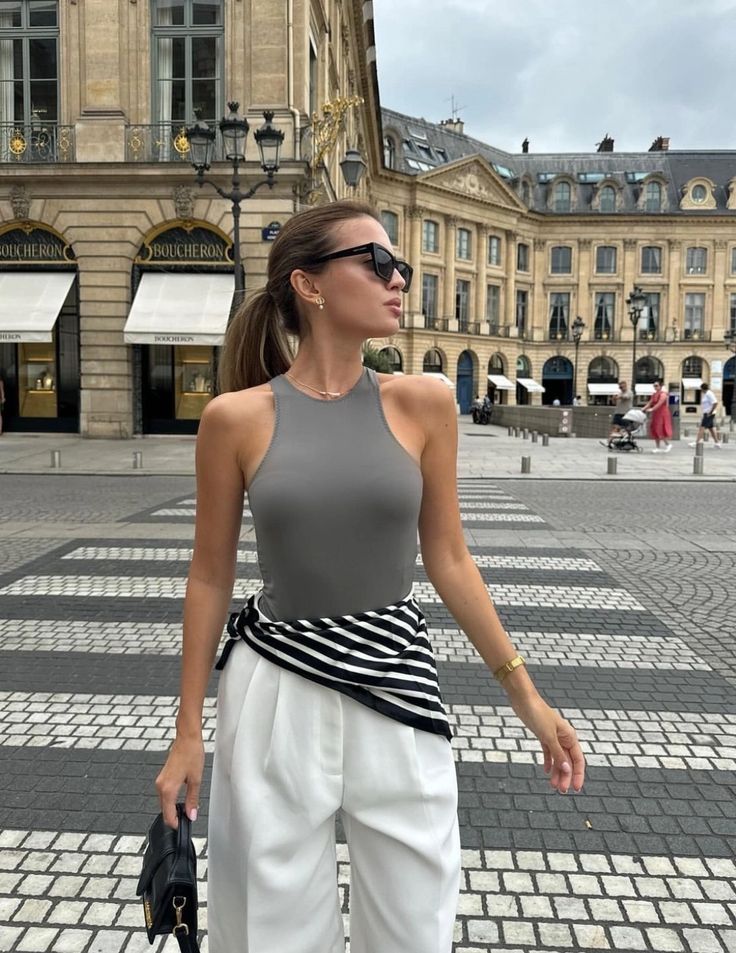
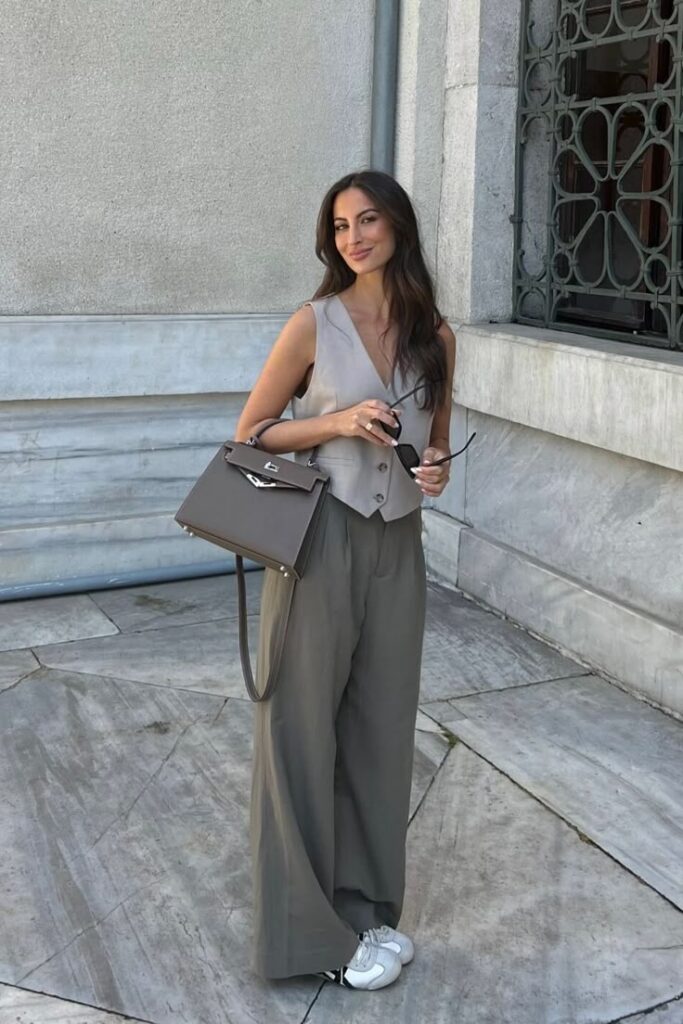
Business casual can be tricky to understand, but it’s all about mixing polished pieces with comfort. The key to business casual combinations is pairing simple, neat tops with well-fitted bottoms and smart shoes to look professional without being too formal. This style works well in many workplaces and helps you stay comfortable and presentable all day.
Choosing the right clothes means focusing on basics that fit well and can be mixed easily. Layering smartly and picking the right accessories can improve any outfit while keeping it work-appropriate. Different work settings may need slight changes in style, but the main idea stays the same: looking clean and put-together without overdoing it.
Key Takeways
- Choosing basics that fit well is essential for good combinations.
- Simple layers and accessories can elevate a business casual look.
- Adjusting outfits slightly helps fit different work environments.
Foundations of Business Casual Combinations
Business casual clothes blend professionalism with comfort. It requires choosing the right balance of style, materials, and seasonal adjustments to fit workplace norms while remaining practical. Knowing the basics helps create outfits that are both neat and adaptable.
Key Principles of Business Casual Attire
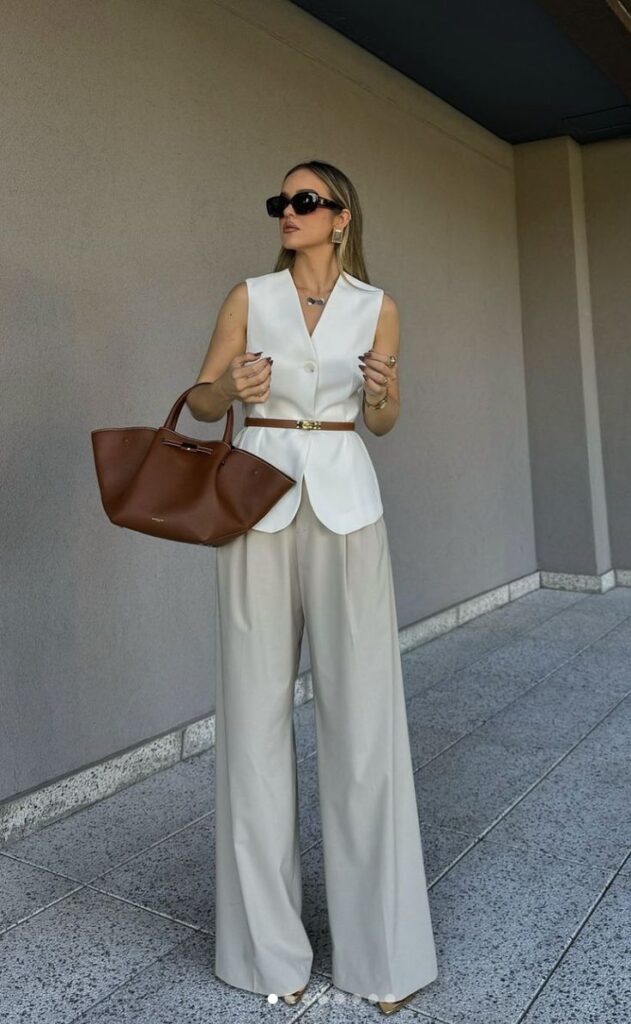
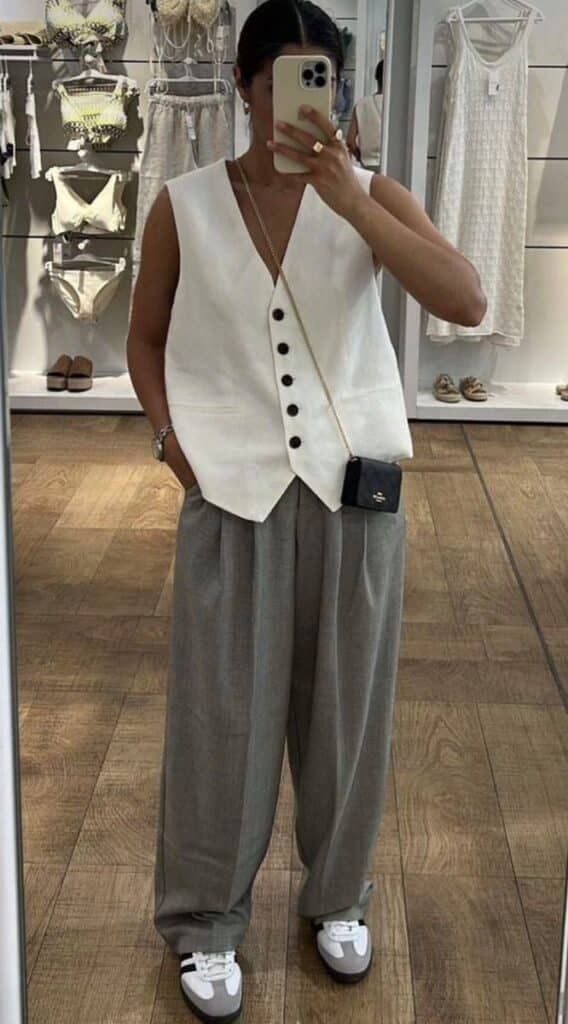
Business casual means wearing clothes that are tidy but not as formal as a suit. Pants or skirts should be clean and wrinkle-free, usually made of cotton or blends. Shirts can be button-downs, blouses, or polo shirts without loud patterns.
Shoes need to be closed-toe and neat, like loafers or flats. Avoid sneakers, sandals, or overly casual shoes. Accessories should be simple and minimal to maintain a professional look without drawing too much attention.
Colors tend to be neutral or muted, such as navy, gray, black, or beige. Bright or flashy colors are rare in strict business casual settings but can work in creative industries if used sparingly.
Typical Fabrics and Textures
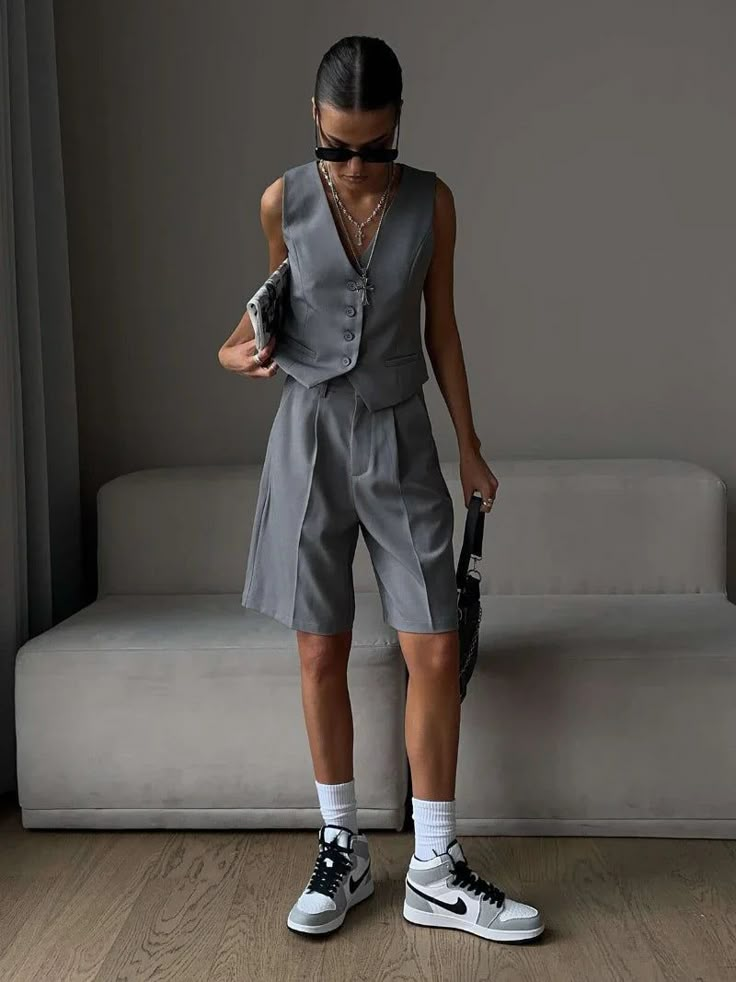
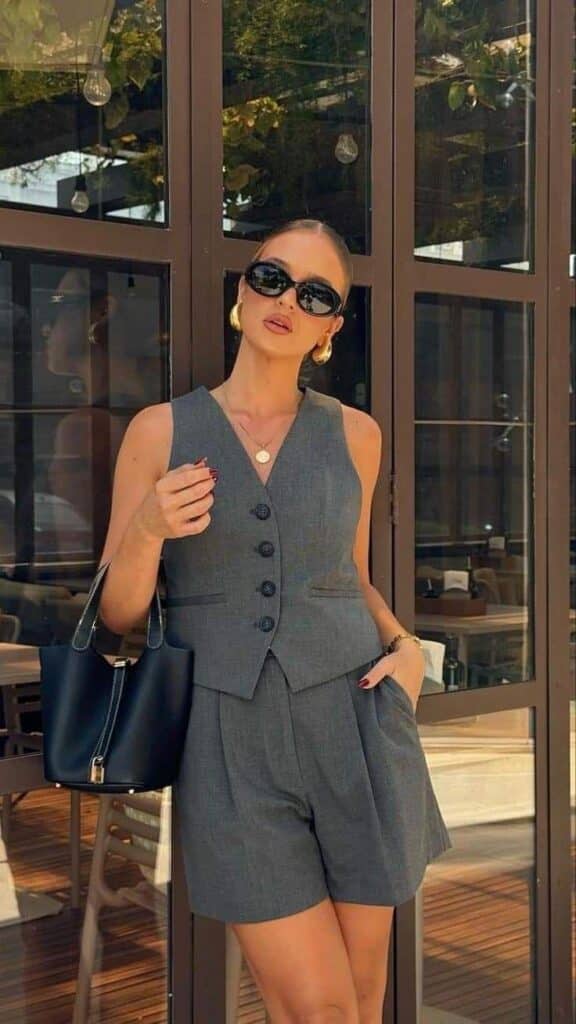
Business casual outfits rely on fabrics that look smooth but feel comfortable. Cotton is common because it breathes well and is easy to care for. Polyester blends help resist wrinkles and keep clothes looking fresh throughout the day.
Wool or wool blends work well for cooler weather, offering warmth without bulk. Avoid shiny or flashy textiles like silk or satin, as these can seem too formal or dressy.
Texture can add interest while staying professional. Subtle patterns like small checks or thin stripes are acceptable. Heavier textures like tweed should be balanced with simpler pieces in the outfit to avoid appearing too casual.
Seasonal Considerations for Business Casual
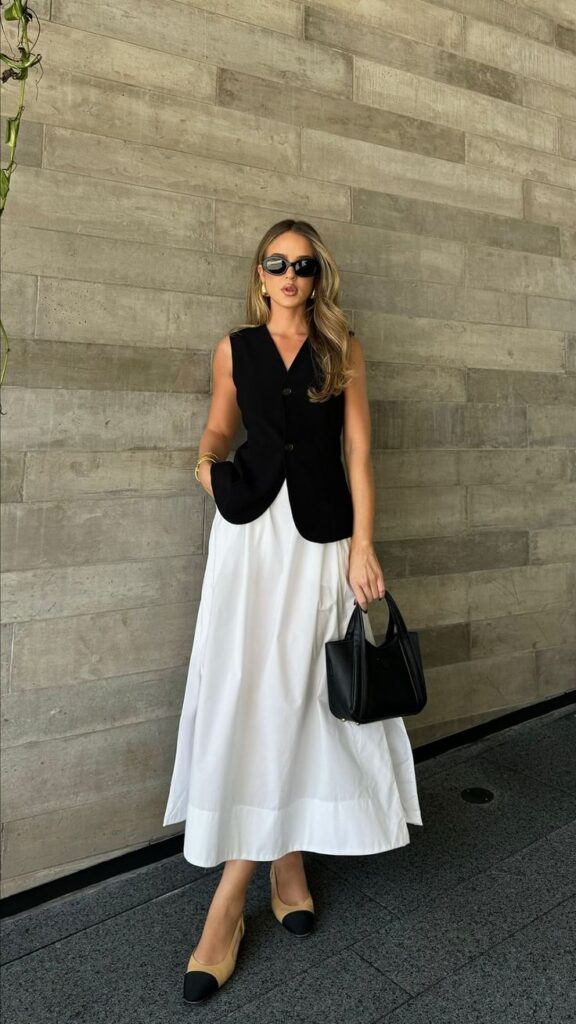
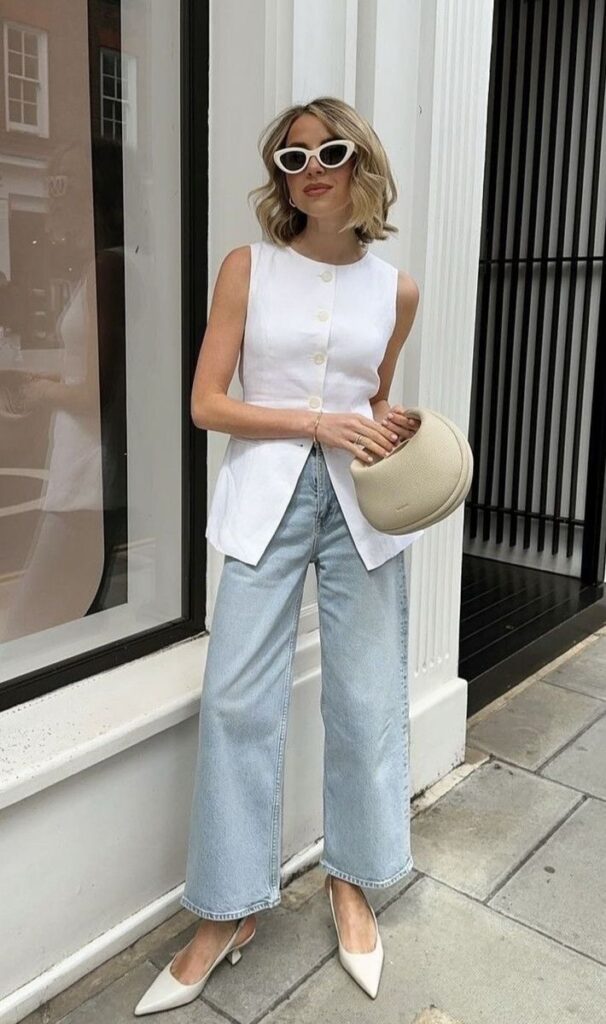
Fabric choice changes with the season to keep the wearer comfortable and polished. In spring and summer, lightweight cotton or linen blends help with breathability. Short sleeves or rolled-up sleeves are often acceptable when paired with proper pants or skirts.
During fall and winter, layering with sweaters, cardigans, or light jackets becomes common. Wool blends and thicker fabrics give warmth but should maintain a neat shape. Darker colors like charcoal or forest green are popular for colder months.
Footwear also changes with the season. Open shoes are mostly replaced by closed boots or leather shoes during winter to protect from weather while keeping a professional look.
Essential Tops for Business Casual
Choosing the right tops means balancing neatness with comfort. Fabrics should be clean and well-pressed. Colors usually stay neutral or soft, avoiding anything too bright or flashy.
Button-Down Shirts and Blouses
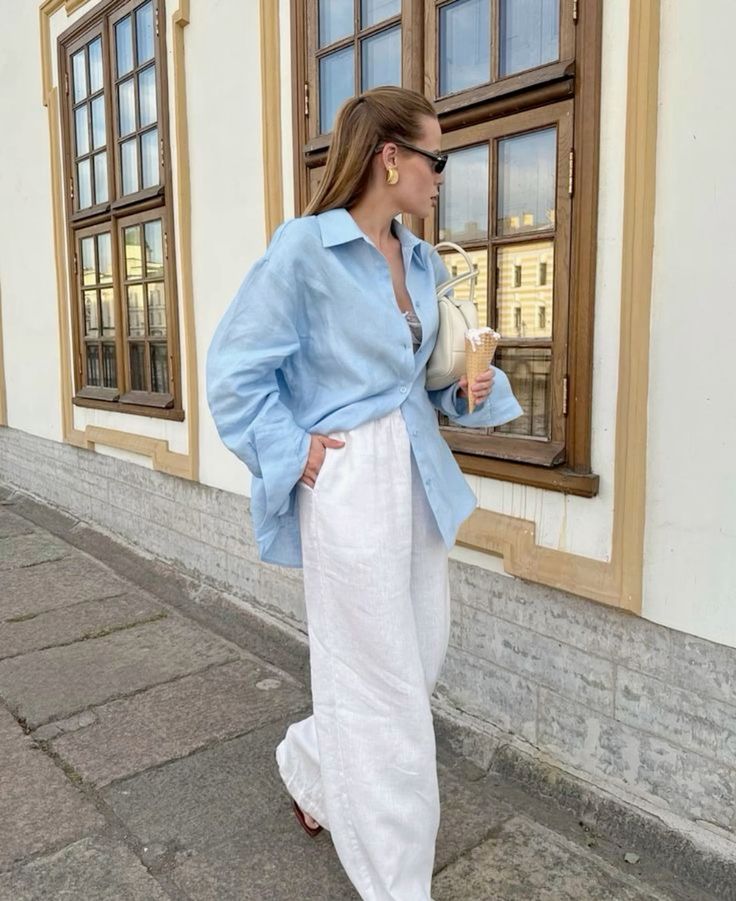
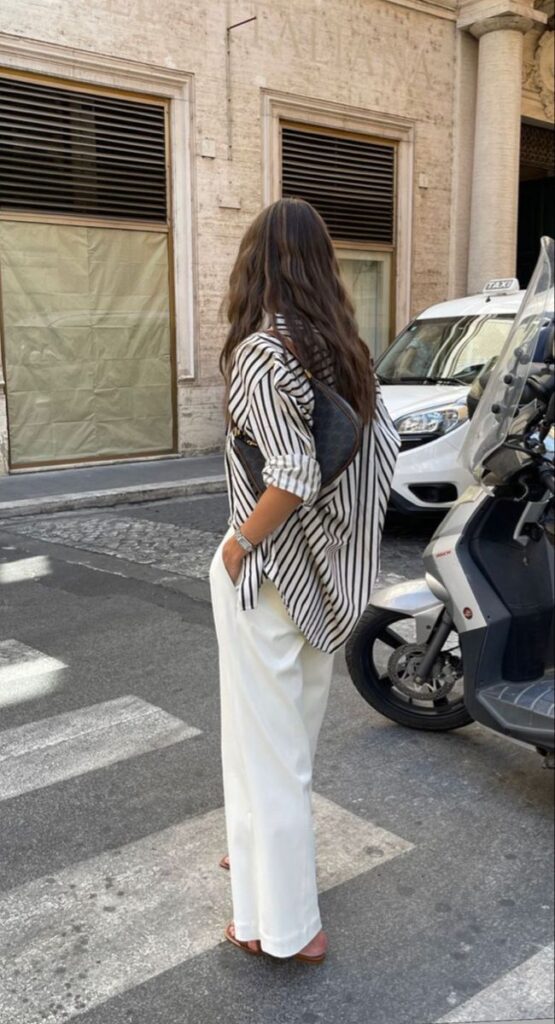
Button-down shirts are a business casual staple. They offer structure and look polished, especially when tucked into pants or skirts. Cotton or cotton blends work best for comfort and durability.
Blouses in simple patterns or solid colors add variety without losing professionalism. Avoid overly bright prints or anything too sheer. Details like a subtle collar, small buttons, or gentle ruffles can keep the look interesting but still work-appropriate.
Sweaters and Cardigans
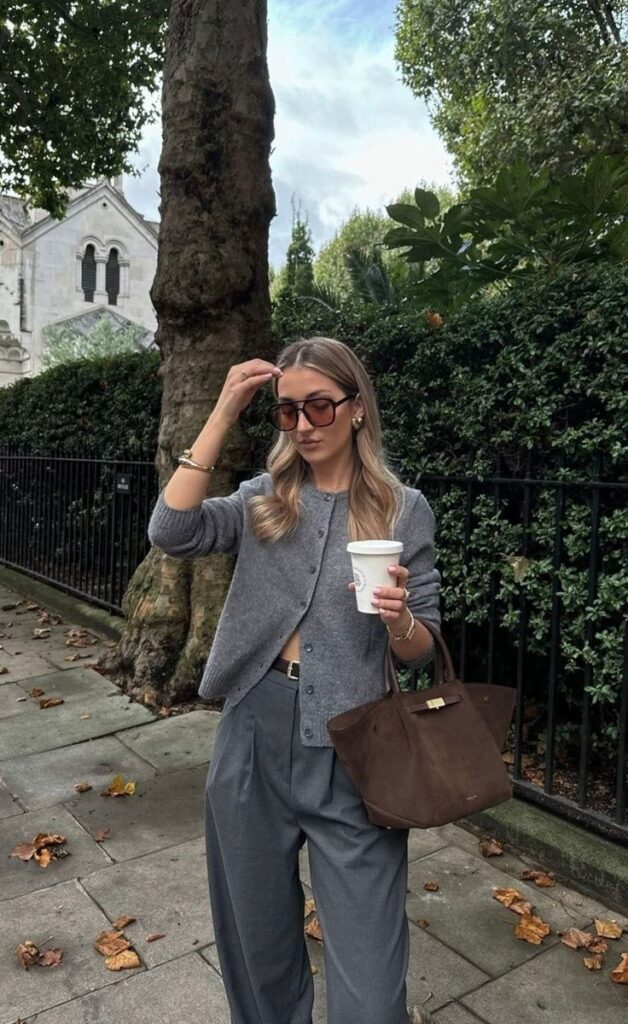
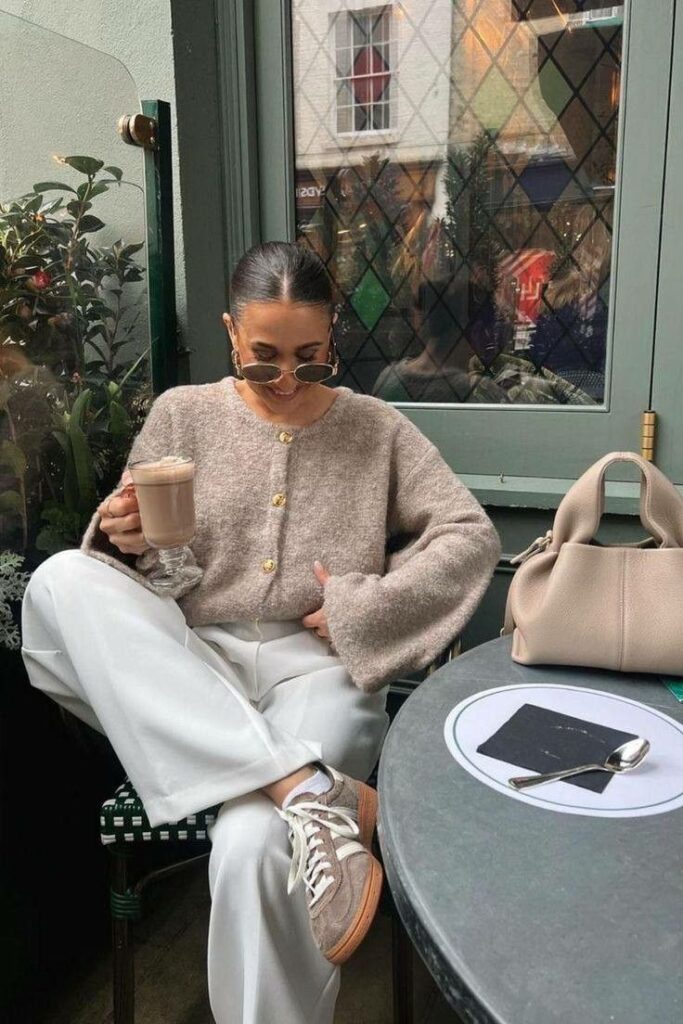
Sweaters and cardigans add warmth and style. Fine knits in neutral colors like gray, navy, or beige are preferred. They can be layered over shirts for a clean, put-together look.
Cardigans are versatile because they open in front and can match with many outfits. Avoid oversized sweaters or ones with bold logos. Fit is key; the sweater should not be too tight or too loose.
Polo Shirts and Turtlenecks
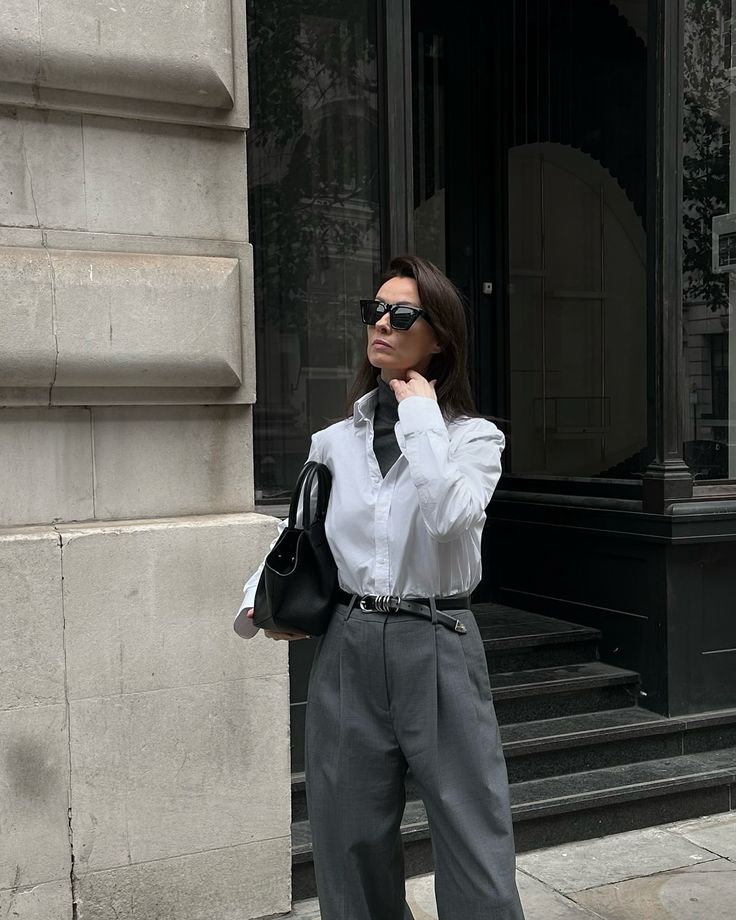
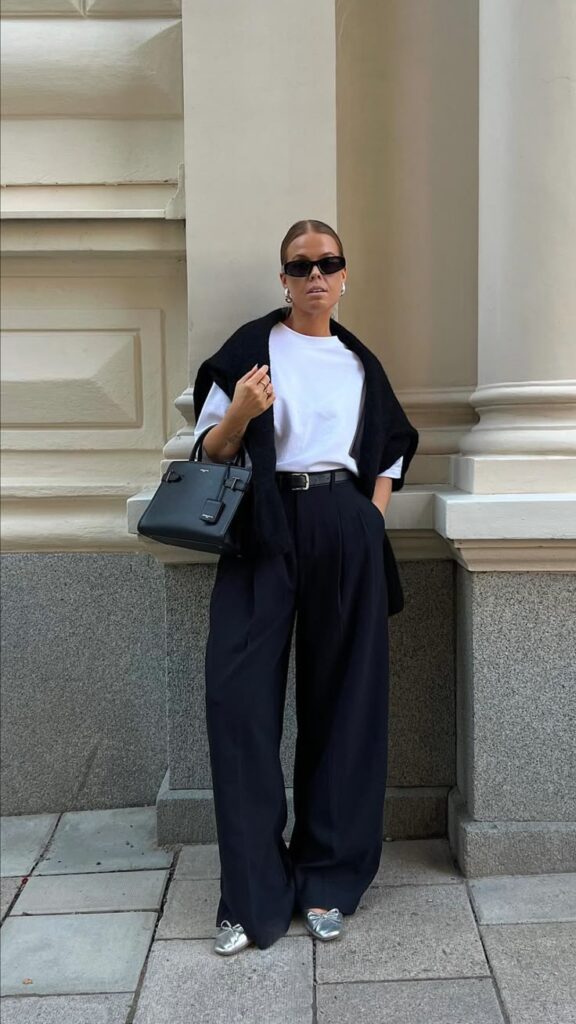
Polo shirts bring a sporty but neat vibe. Stick with plain or lightly patterned polos in soft fabrics. They pair well with chinos or dress pants.
Turtlenecks offer a sleek, minimalist style. Thin-knit turtlenecks in solid colors can replace a blouse or shirt on cooler days. They work best under blazers or sweaters to maintain a smart appearance.
Bottoms to Pair with Business Casual Outfits
Choosing the right bottoms is key to nailing a business casual look. They should balance professionalism with comfort and style. Proper fit and material make a big difference in appearance and confidence.
Dress Slacks and Trousers
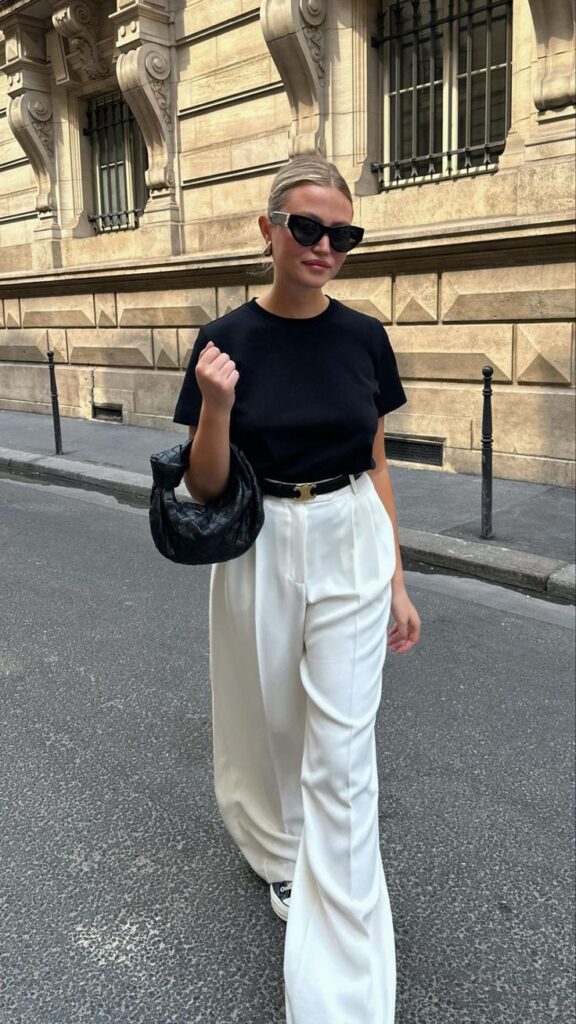
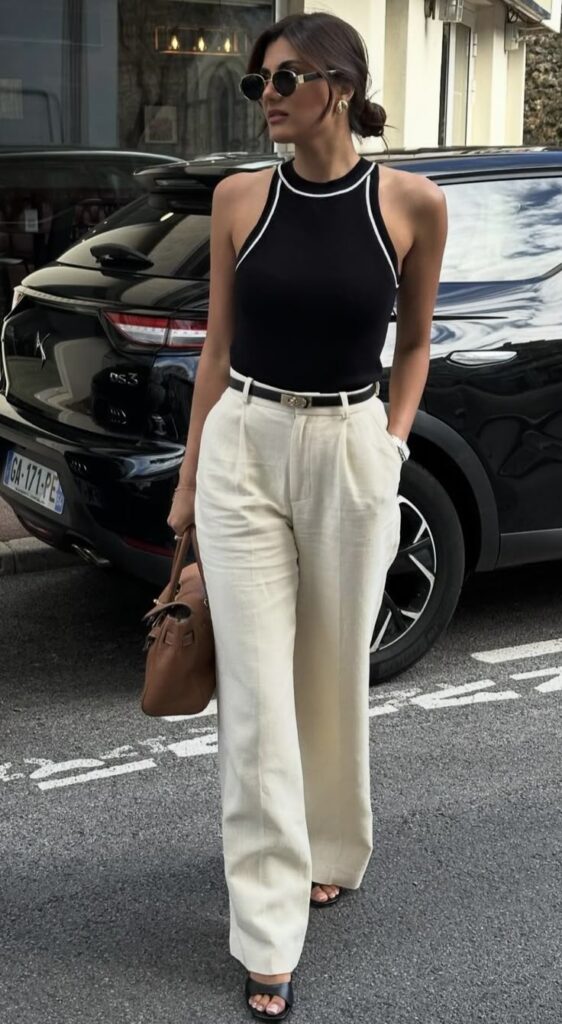
Dress slacks and trousers are the foundation for many business casual outfits. These pants are usually made from wool or a wool blend, giving a polished, smooth look. Neutral colors like black, gray, navy, and beige work best because they match easily with various tops.
Fit is important. Pants should neither be too tight nor too loose. A straight or slightly tapered leg is the safest choice. Avoid overly shiny or casual fabrics like denim or linen for a clean, refined appearance.
Pairing dress slacks with button-up shirts, blouses, or lightweight sweaters completes a smart look suitable for most workplaces.
Chinos and Khakis
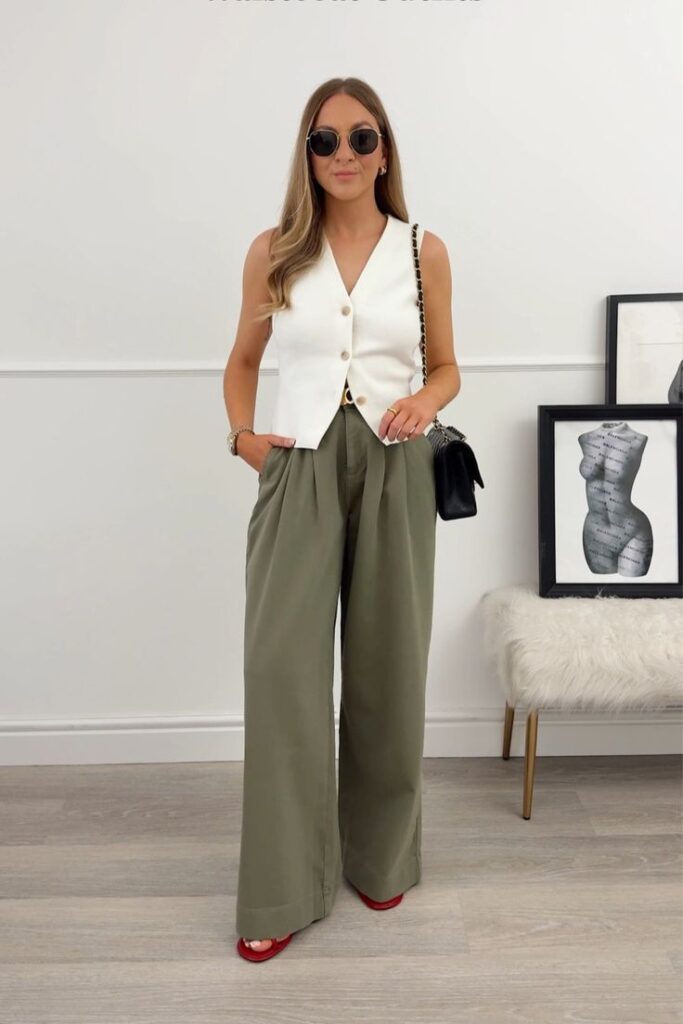
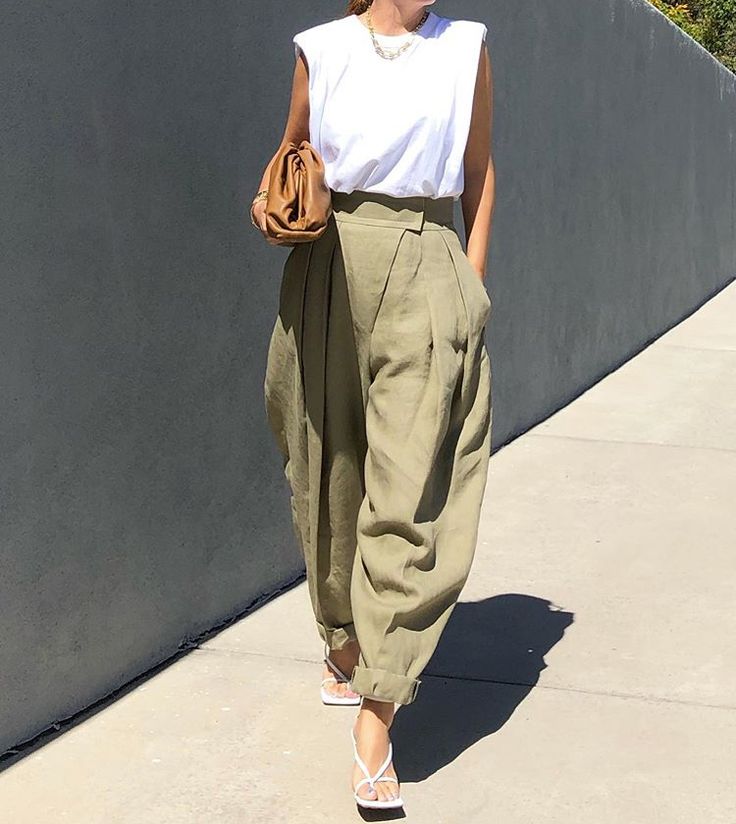
Chinos and khakis offer a more relaxed style while still looking professional. These cotton-based pants are popular for warmer days or less formal settings. Colors range from tan, olive, navy, to lighter pastels.
They should fit well at the waist and hips with a slim or straight leg design. Rolling the cuffs can add a casual touch but should be neat and not sloppy. Avoid oversized or baggy styles.
Chinos pair well with polo shirts, casual button-downs, and blazers. They provide comfortable yet sharp options that are less formal than dress slacks but acceptable in many offices.
Skirts in Business Casual Looks
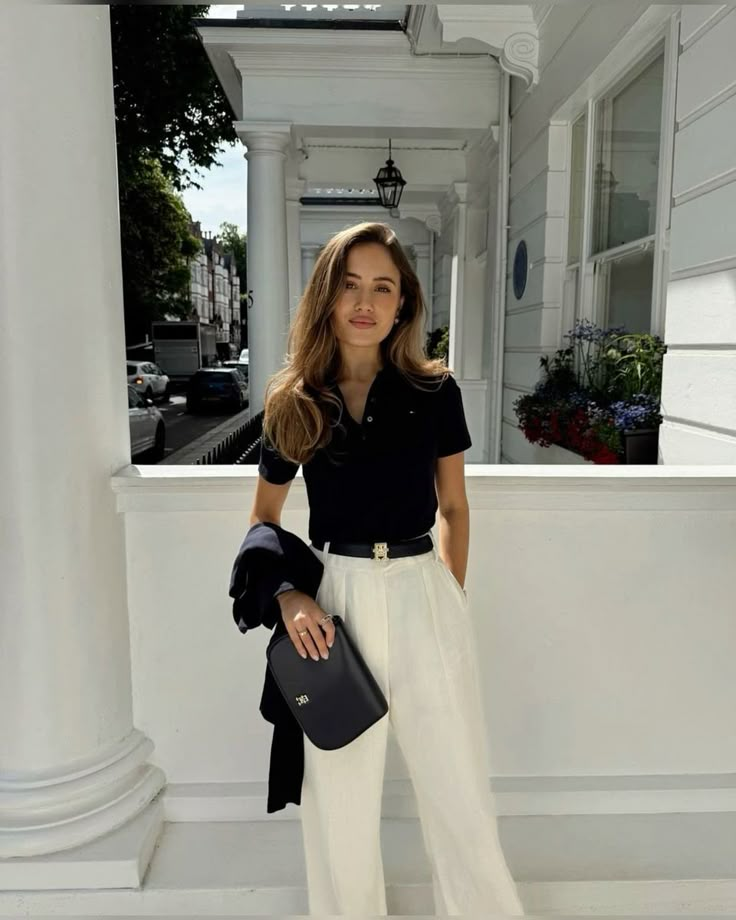
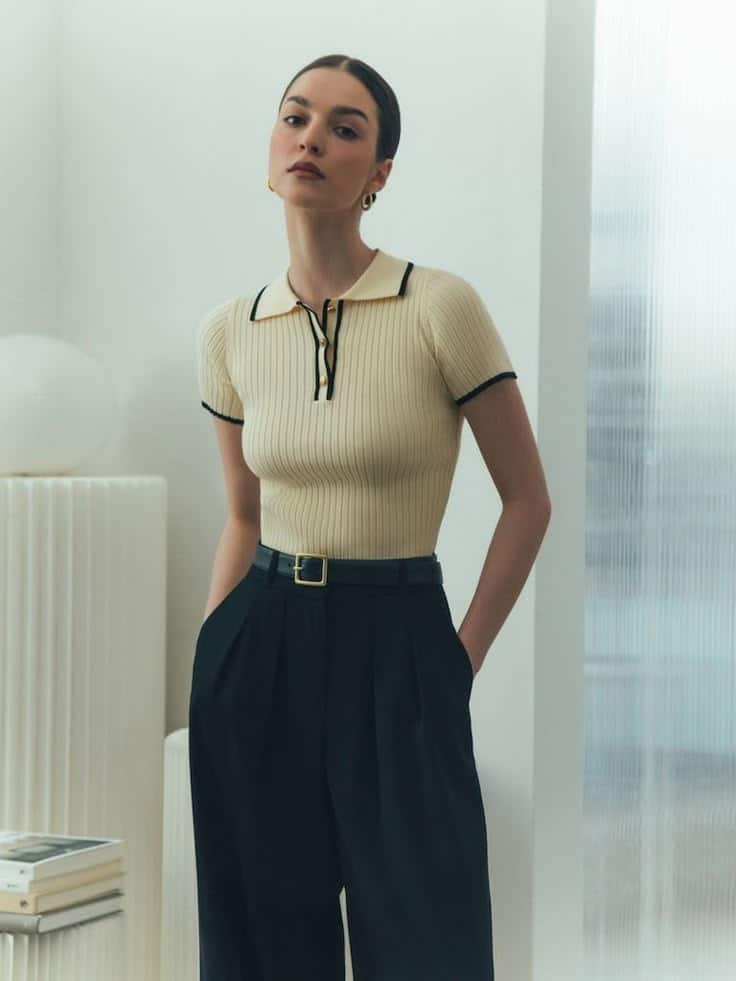
Skirts are a versatile option that can balance professionalism and style. Pencil skirts are the most common type, offering a streamlined and polished silhouette. Knee-length or just below the knee is generally preferred.
Materials like cotton blends, wool, or polyester work well. Avoid very tight, short, or flashy styles to maintain a business-appropriate look. A-line skirts can also work but should be modest in length and shape.
Pair skirts with blouses, knit tops, or tailored jackets. Neutral or subdued colors often work best, but subtle patterns can add personality without losing professionalism.
Smart Layering for Business Casual
Layering helps adjust to changing temperatures while keeping a put-together look. Choosing the right pieces makes it easier to look professional without feeling overdressed or too relaxed.
Blazers and Sports Coats
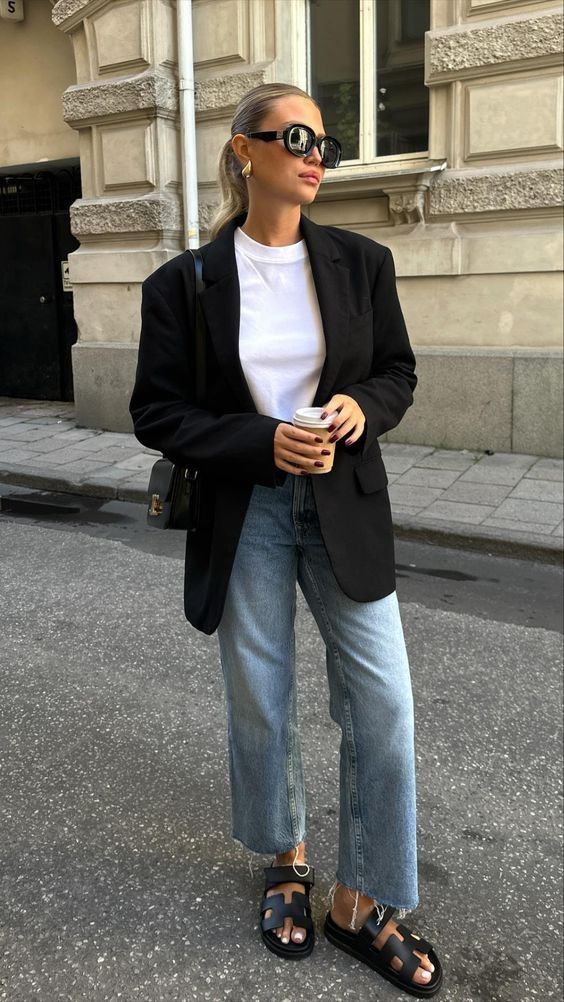
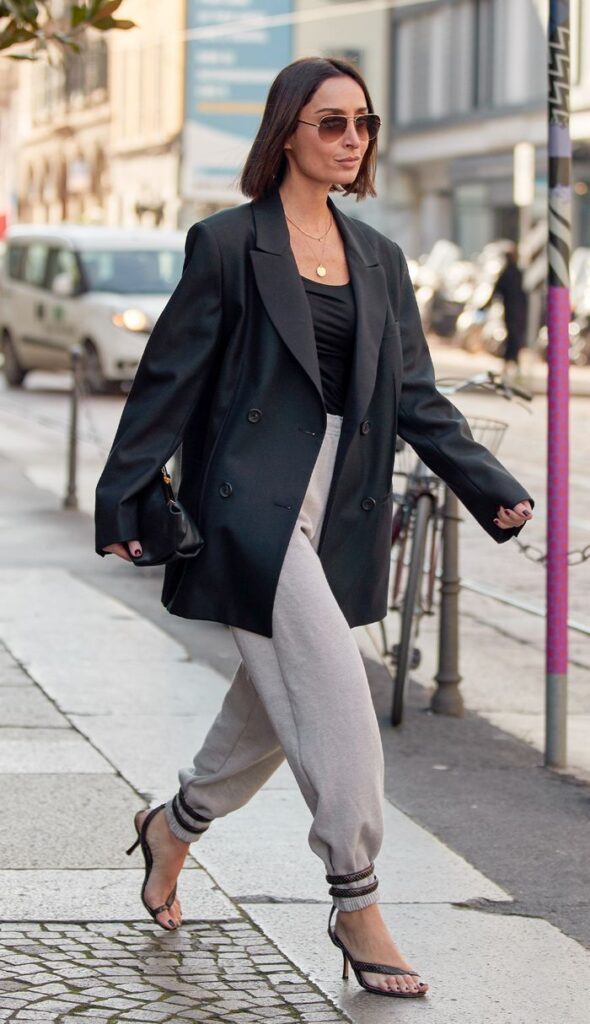
Blazers and sports coats are key layers in business casual outfits. They add structure and polish to simple shirts or knitwear. Dark colors like navy, charcoal, or black work well in most settings.
Fit matters more than anything. A blazer should hug the shoulders without pulling or sagging. Sleeves that show a bit of the shirt cuff look neat and intentional.
Heavier fabrics like wool are good for cooler months. For warmer weather, lightweight cotton or linen blends keep the look sharp without causing sweat. Patterns like subtle checks or herringbone add interest but should stay muted.
Lightweight Outerwear
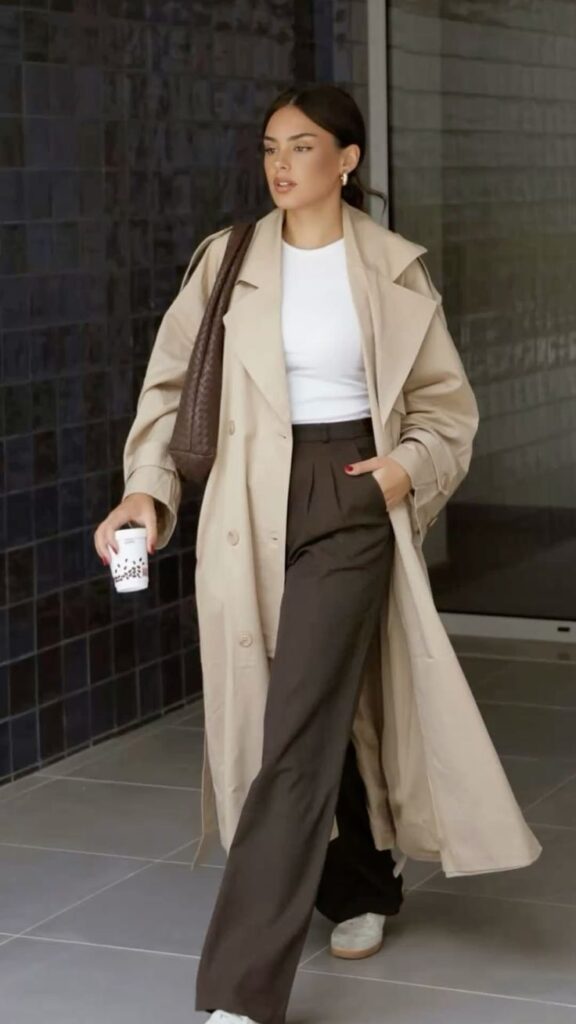
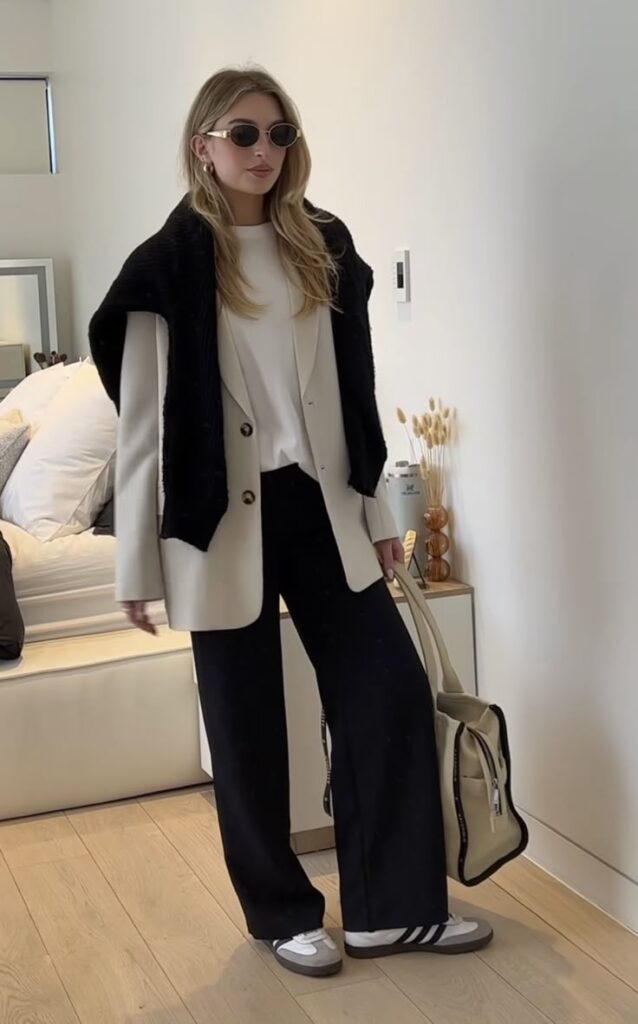
Lightweight outerwear works best when it combines style with function. Options include cardigans, thin sweaters, and unlined jackets. These layers keep warmth without bulk.
Cardigans in fine knits like merino wool or cotton blend well with collared shirts. They slide easily under blazers or sports coats. Choose neutral tones such as gray, beige, or navy for versatility.
Unlined jackets made of cotton or nylon offer protection from wind and light rain. They maintain a casual vibe but still look refined. Avoid heavy parkas or bulky coats, as these clash with business casual norms.
Business Casual Footwear Choices
Choosing the right footwear is key for business casual attire. Comfort, professionalism, and style all matter. Footwear should match the outfit while fitting well for a full day of work.
Loafers and Oxfords
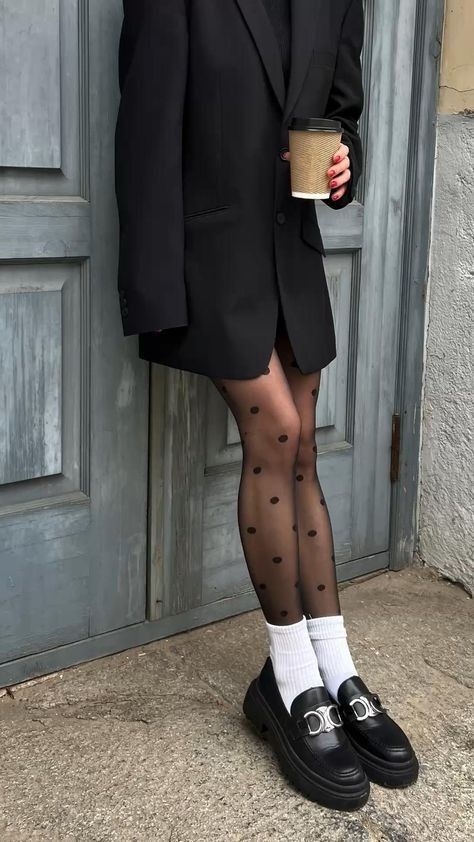
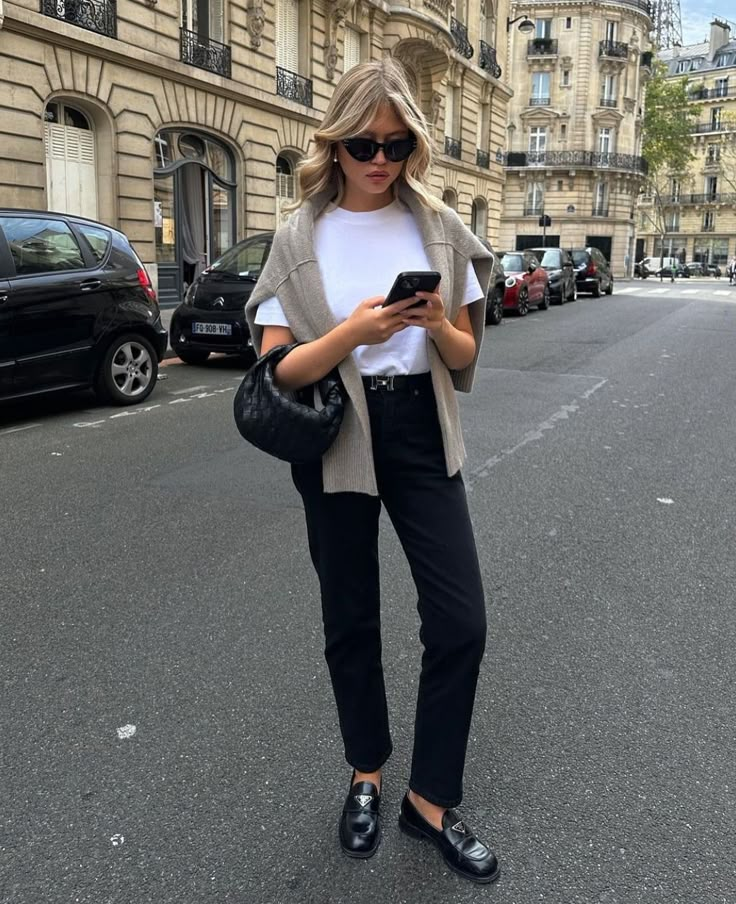
Loafers are a popular choice for both men and women in business casual. They are slip-on, comfortable, and come in leather or suede. Dark-colored loafers like black, brown, or navy are best for a polished look.
Oxfords offer a more formal touch but still fit business casual easily. They have laces and a clean design. Smooth leather in neutral colors works well with dress pants or chinos.
Both options should be clean and well-maintained. Worn or scuffed shoes can take away from the professional appearance.
Heels and Flats
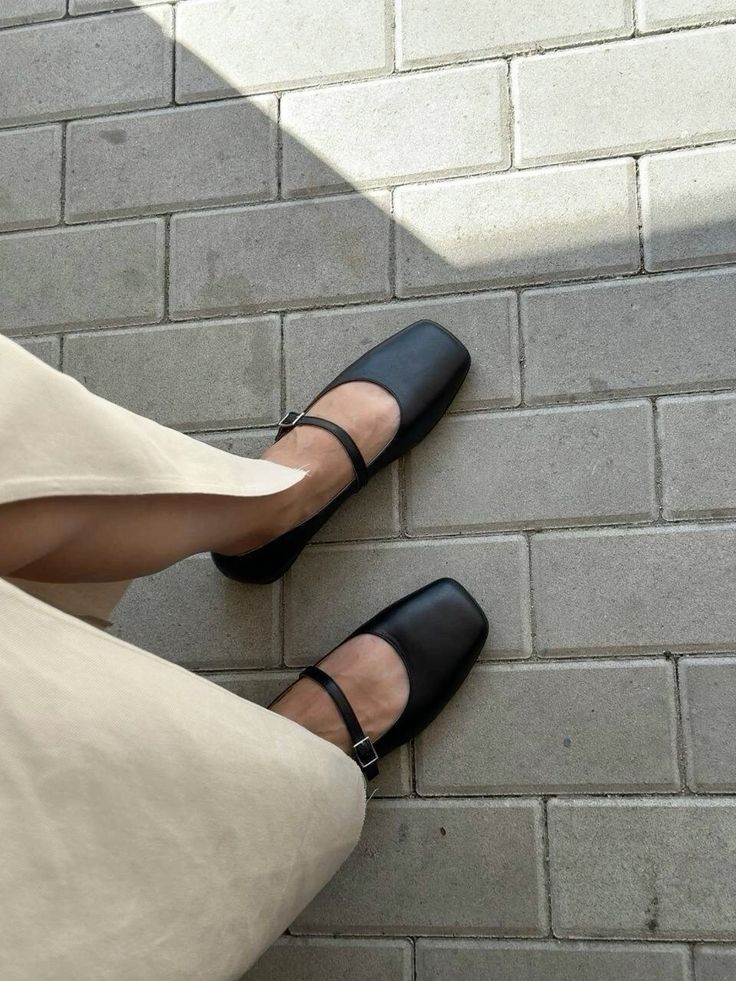
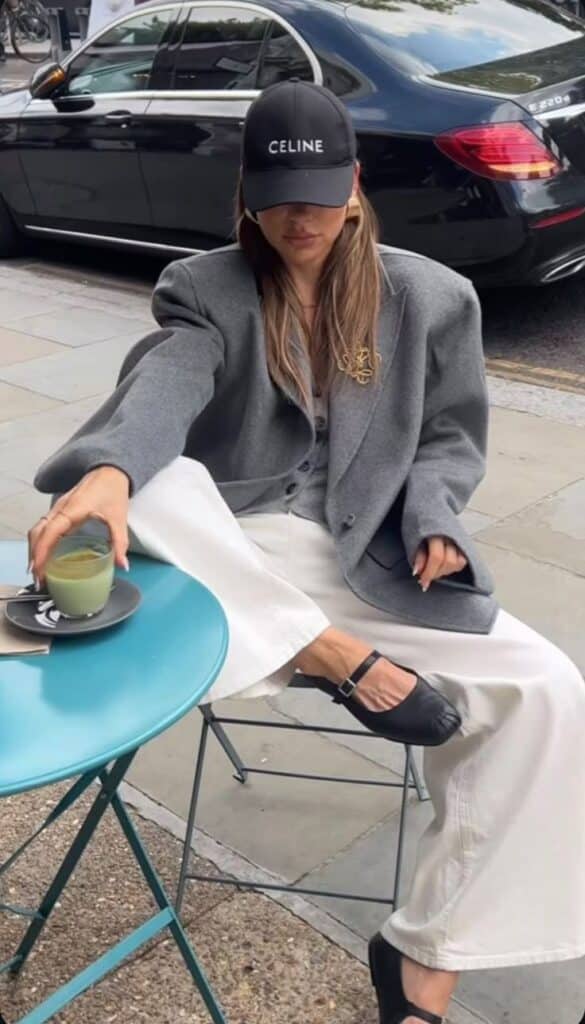
Women often choose between low heels and flats for business casual. Heels under 3 inches work best to maintain professionalism without causing discomfort. Closed-toe pumps in black, beige, or navy are the safest bets.
Flats are a strong alternative when comfort is a priority. Ballet flats, loafers, or pointed-toe flats made from leather or suede look sharp. Avoid overly casual styles like sandals or brightly colored shoes.
A simple design with minimal decoration fits most office environments.
Boots in Business Settings
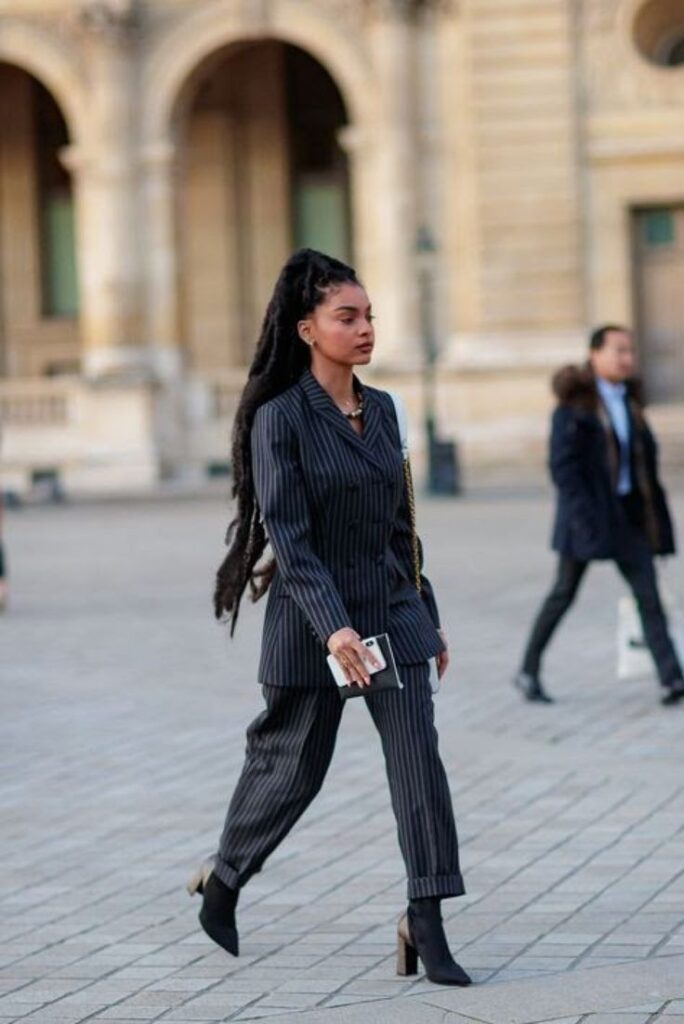
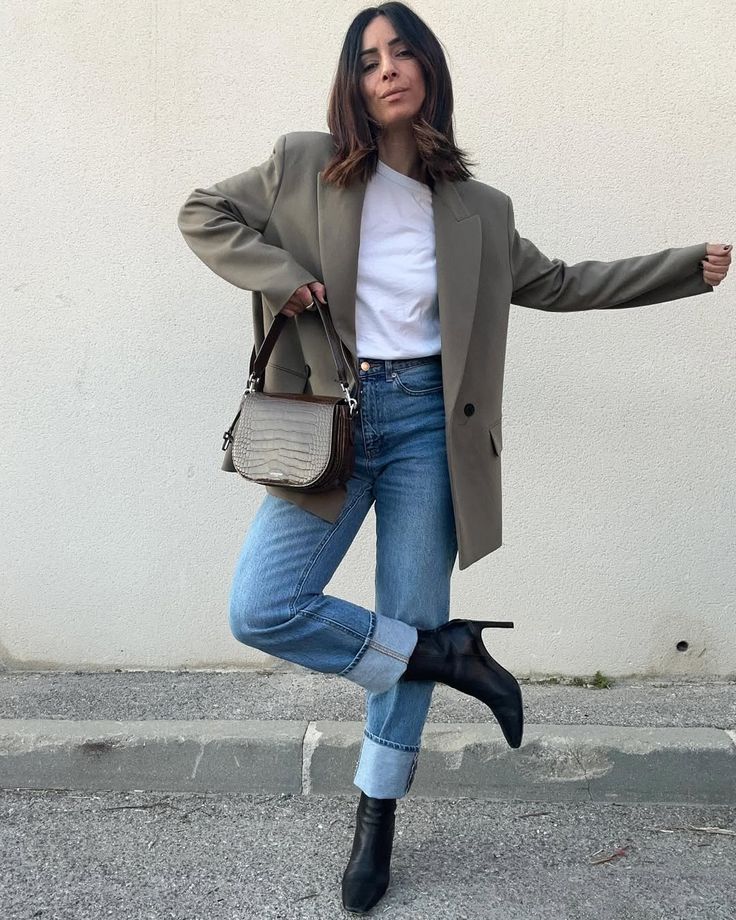
Boots can fit into business casual, especially in colder months. Ankle boots made from leather in dark colors are the most appropriate.
They should have a clean design without heavy soles or excessive details like buckles or studs. Avoid hiking or work-style boots.
Pair boots with tailored pants or skirts. Keep the boots polished and avoid worn-out soles to maintain a neat look.
Accessories for Business Casual Combinations
Choosing the right accessories can lift a business casual outfit without overpowering it. Well-picked pieces add polish and show attention to detail, balancing style and professionalism.
Belts and Watches
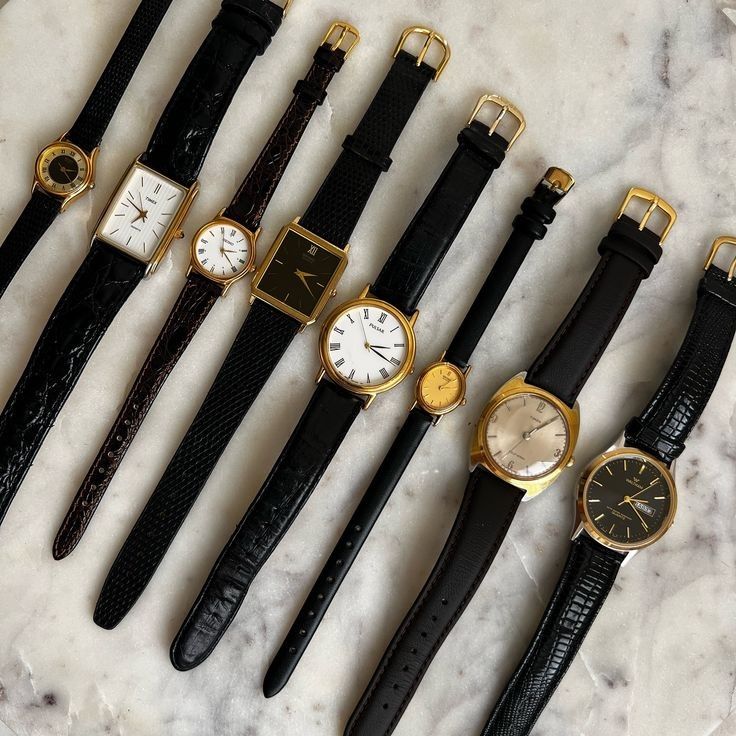
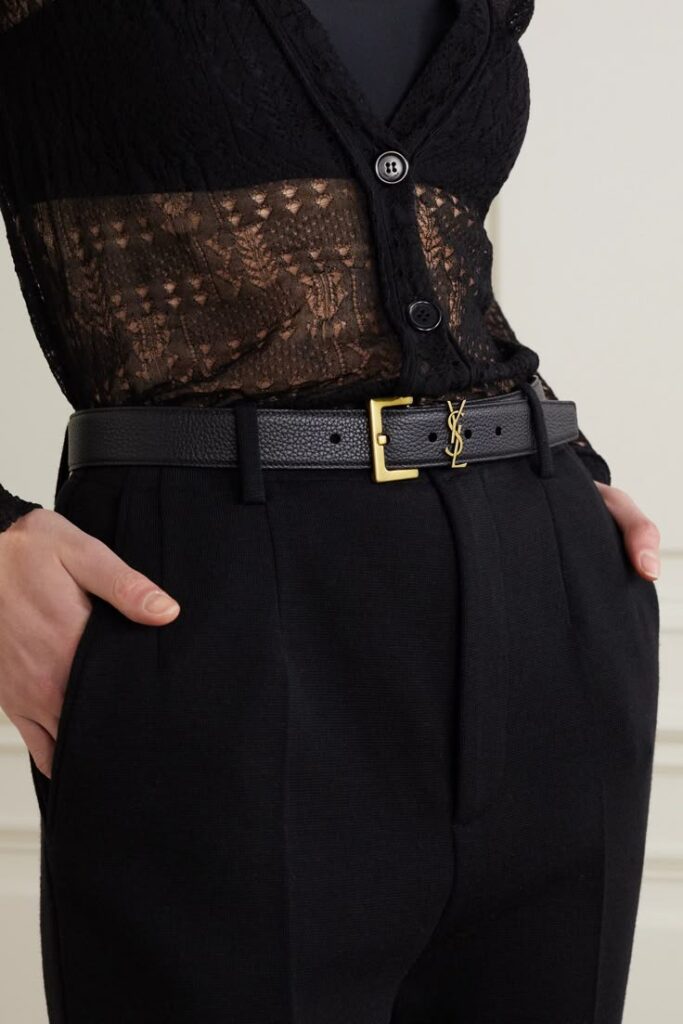
Belts should match the outfit’s color scheme, usually sticking to brown or black leather. The belt buckle must be simple and sleek, avoiding flashy designs or large logos.
Watches are useful for both style and function. A classic metal or leather strap watch with a clean face fits best. Digital or oversized sporty watches are not ideal for business casual settings.
Both belts and watches should complement the other accessories. For example, wearing a brown belt with a brown leather watch strap creates a cohesive look. Quality matters more than trendiness in these pieces.
Bags and Briefcases
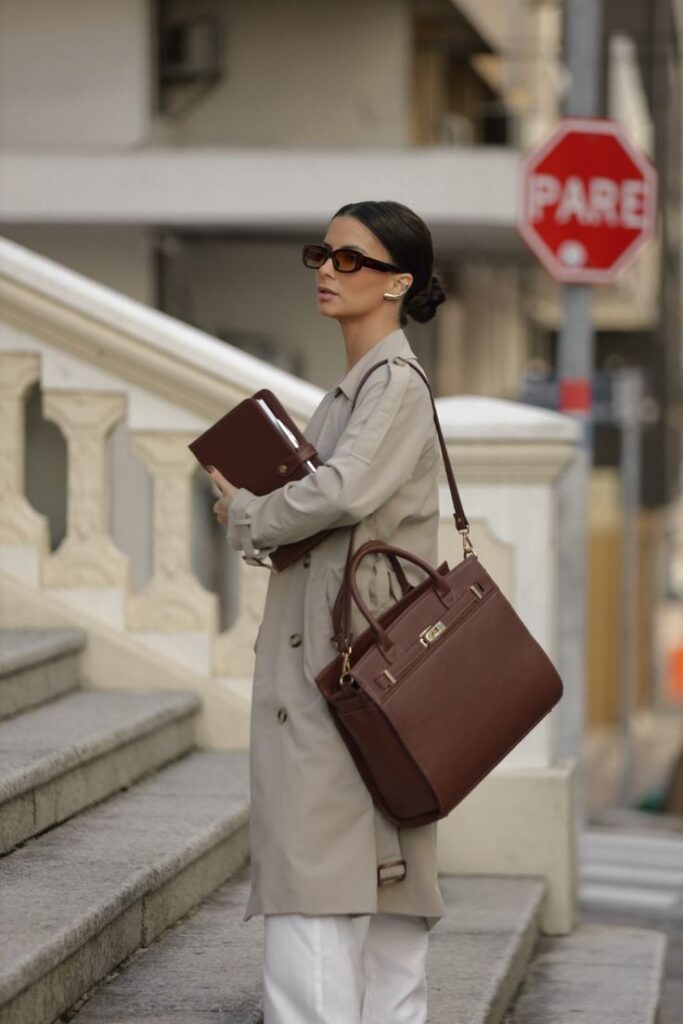
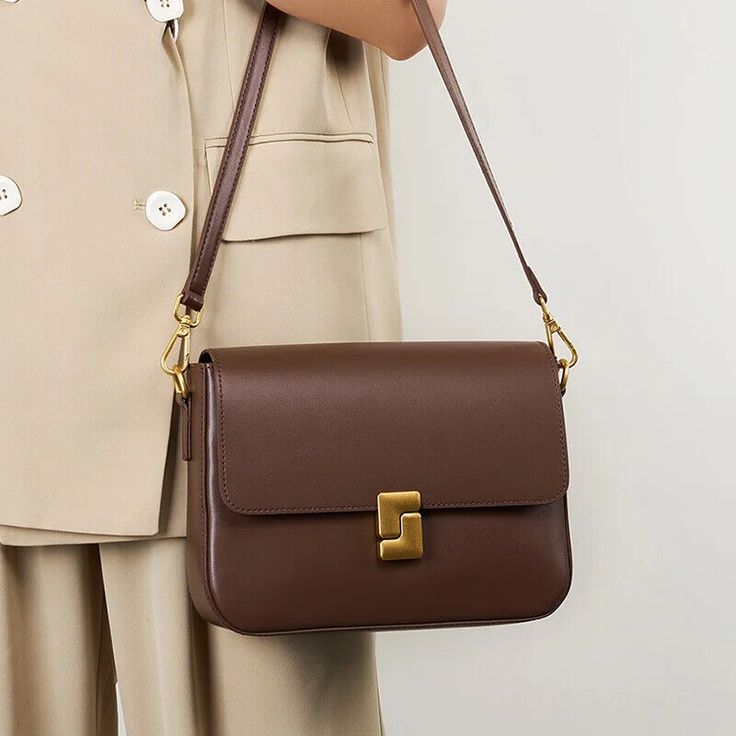
A streamlined bag or briefcase carries necessary items while enhancing the outfit. Leather or faux leather materials work well, especially in black, brown, or navy.
The size should be practical but not bulky. Slim, structured designs help keep the look professional and organized. Backpacks are acceptable if they have a clean, minimal style and good quality material.
Pockets and compartments inside the bag aid in organization. It helps to keep documents, gadgets, and personal items orderly without cluttering the workspace or client meetings.
Color Coordination and Pattern Mixing
Color choices and patterns can change the look of a business casual outfit. Knowing how to balance colors and mix patterns helps create outfits that look sharp without being too loud or dull.
Neutral vs. Bold Color Combos
Neutral colors like black, white, navy, beige, and gray form a solid base for business casual wear. These colors are easy to combine and create a clean, professional look. For example, pairing navy pants with a white shirt is a simple, safe choice.
Bold colors like red, green, or mustard can add energy when used carefully. It’s best to limit bold colors to one part of the outfit, such as a bright blazer or scarf. This avoids clashing and keeps the outfit balanced.
A helpful tip is to use a neutral color as the main piece and add one bold item for a pop of color. This keeps the outfit interesting but still appropriate for business settings.
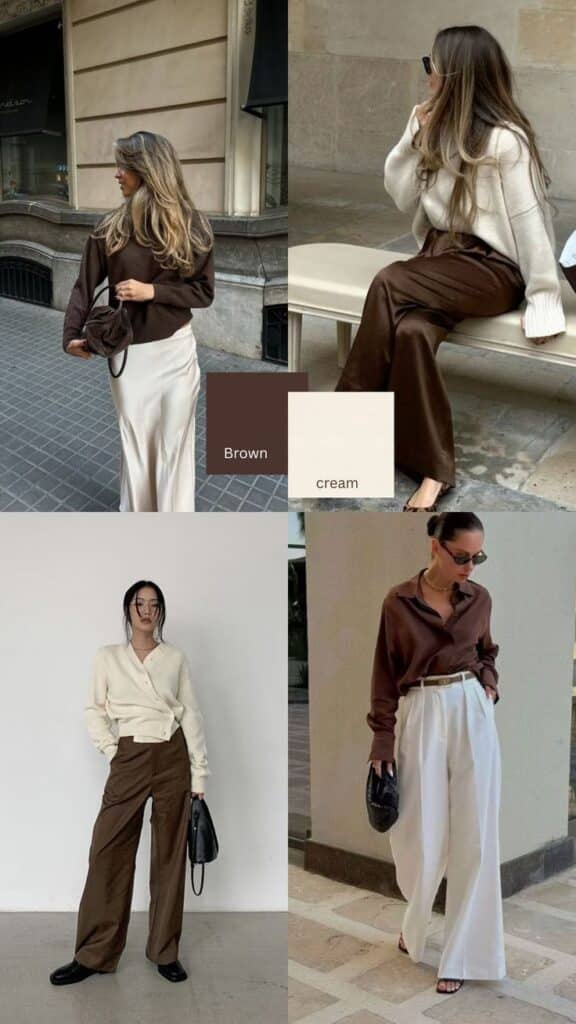
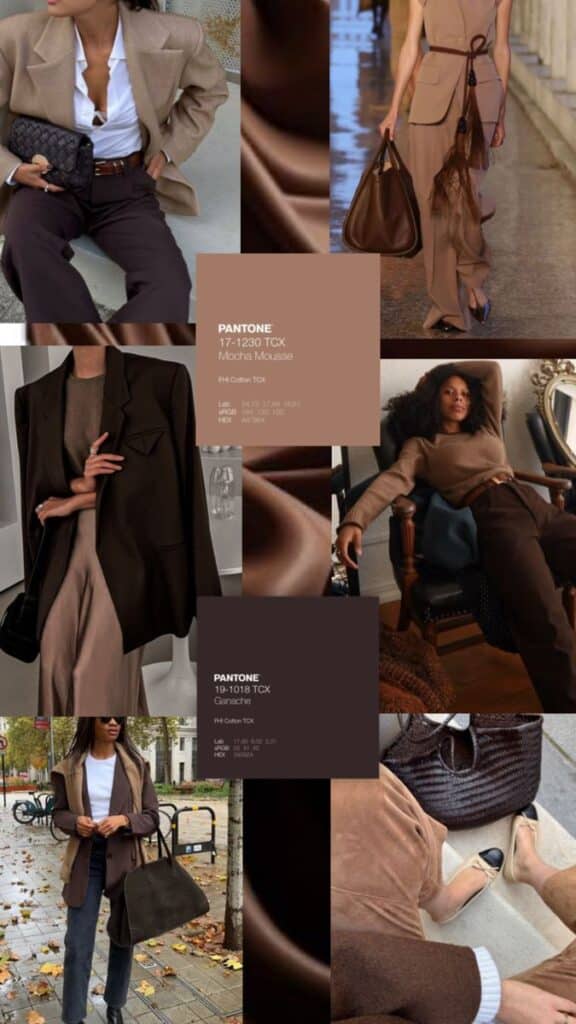
Introducing Subtle Patterns
Patterns add texture and personality, but subtlety is key. Small patterns such as fine stripes, tiny checks, or soft dots work well because they don’t overwhelm. For example, a shirt with thin stripes pairs smoothly with solid pants.
When mixing patterns, it’s important to match the pattern scale. Pair a larger patterned jacket with a shirt that has a smaller pattern. Sticking to one or two colors in patterns helps keep the look unified.
Avoid combining too many patterns or overly bright prints. This tends to look messy rather than stylish in business casual environments. Instead, let one patterned piece be the focus while keeping other pieces plain.
Gender-Specific Business Casual Combinations
Business casual styles vary by gender, with specific clothing pieces offering a polished yet relaxed look. Women often blend structure with softness, while men focus on neatness and layering.
Business Casual for Women
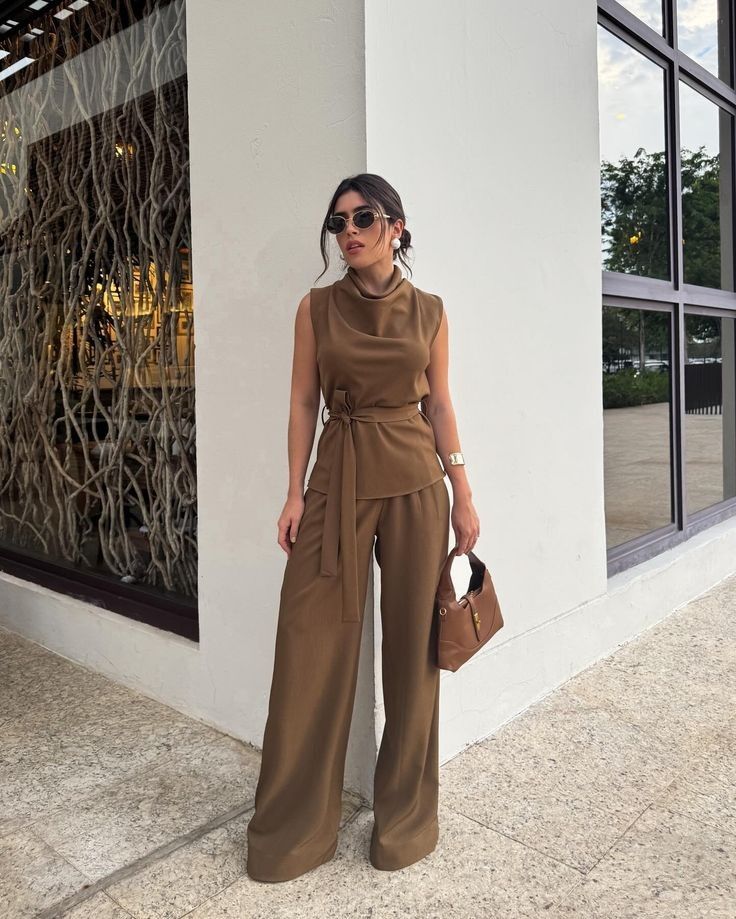
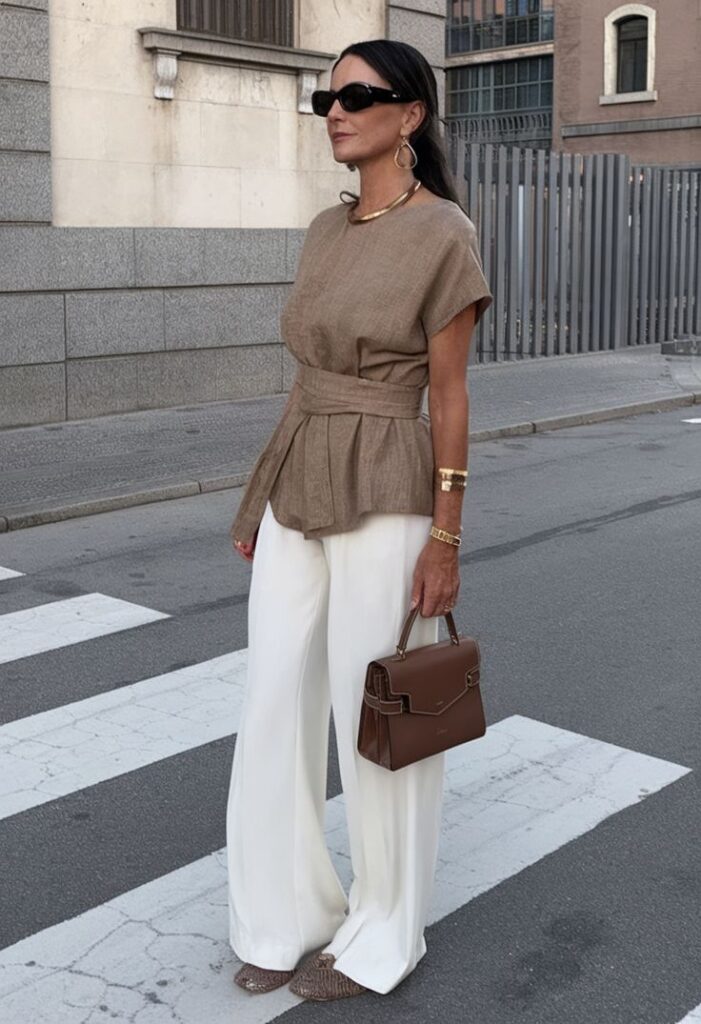
Women can wear tailored blouses paired with dress pants or a pencil skirt. Neutral colors like navy, black, or beige work well for bottoms. Adding a blazer elevates the outfit without making it too formal.
Dresses are also common, especially ones that hit at or just above the knee. Avoid overly bright patterns or casual fabrics like denim. Shoes should be closed-toe flats or low heels.
Accessories should be minimal but thoughtful. A simple watch or small earrings add professionalism. Avoid large or flashy jewelry that can distract.
Business Casual for Men
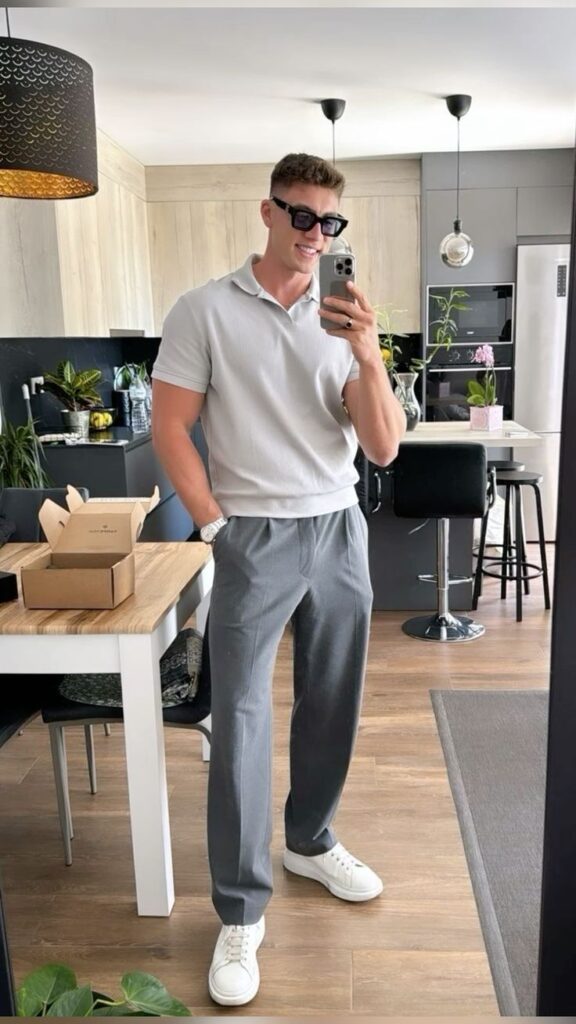
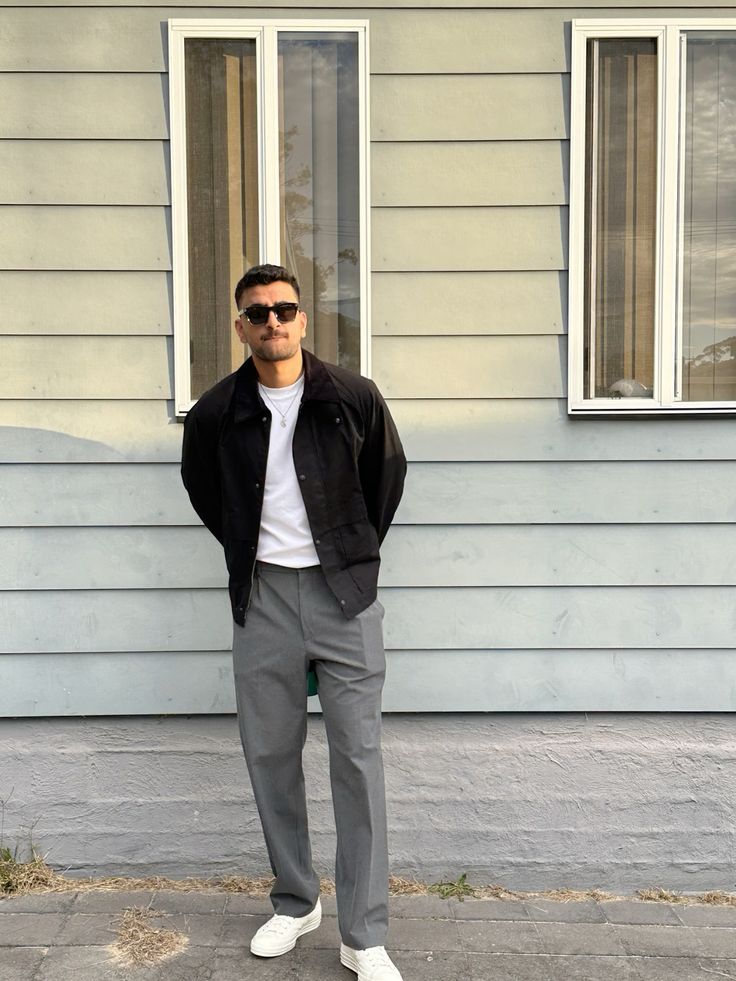
Men typically wear collared shirts like button-downs or polos, often in solid colors or subtle patterns. Pair these with chinos or dress pants in neutral tones such as gray, black, or khaki.
Sweaters or blazers can be layered over shirts, especially in cooler weather. Avoid wearing jeans or athletic shoes to keep the look crisp.
Shoes should be leather loafers or oxfords, kept clean and polished. Belts should match the shoe color. Accessories are limited to a watch or a simple tie, but ties are usually optional in business casual settings.
Adapting Business Casual to Different Work Environments
Business casual varies depending on the workplace culture and industry standards. Some workplaces allow more relaxed styles, while others require sharper, more traditional looks. Understanding these differences helps in choosing appropriate outfits.
Creative Office Settings

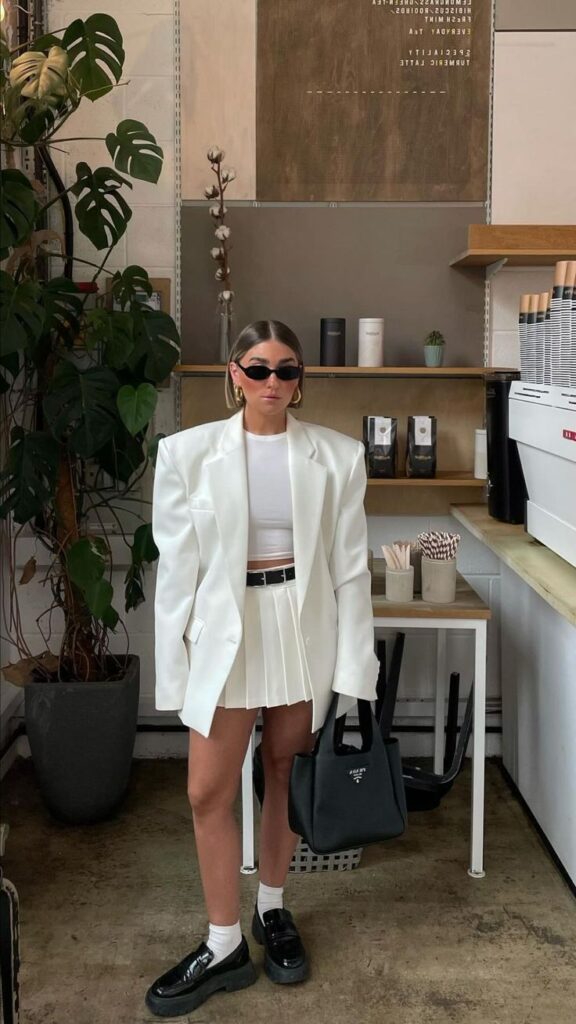
In creative workplaces like advertising or design firms, business casual tends to be more flexible. Employees often wear stylish, modern pieces with room for personal expression. For example, colorful blouses, patterned shirts, and casual blazers are common.
Jeans without rips or tears often work, especially when paired with a neat blazer or a smart top. Shoes can include clean sneakers or loafers. Accessories like bold watches or unique jewelry add personality without breaking dress codes.
While creativity is encouraged, the overall look should still be polished. Avoid overly casual items like graphic T-shirts or flip-flops. The goal is to balance comfort with a put-together appearance.
Corporate and Conservative Industries
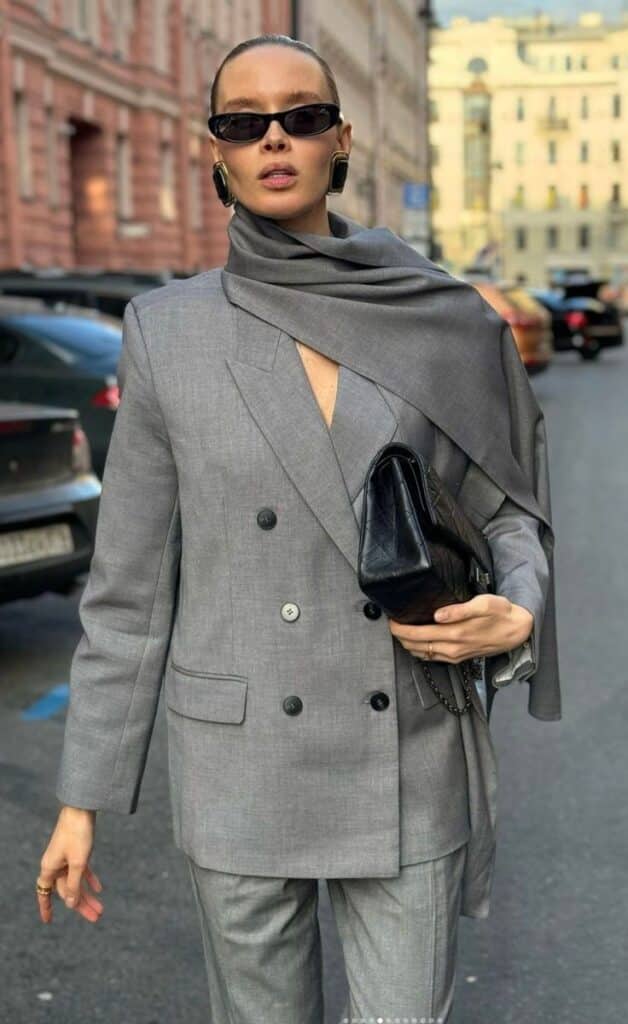
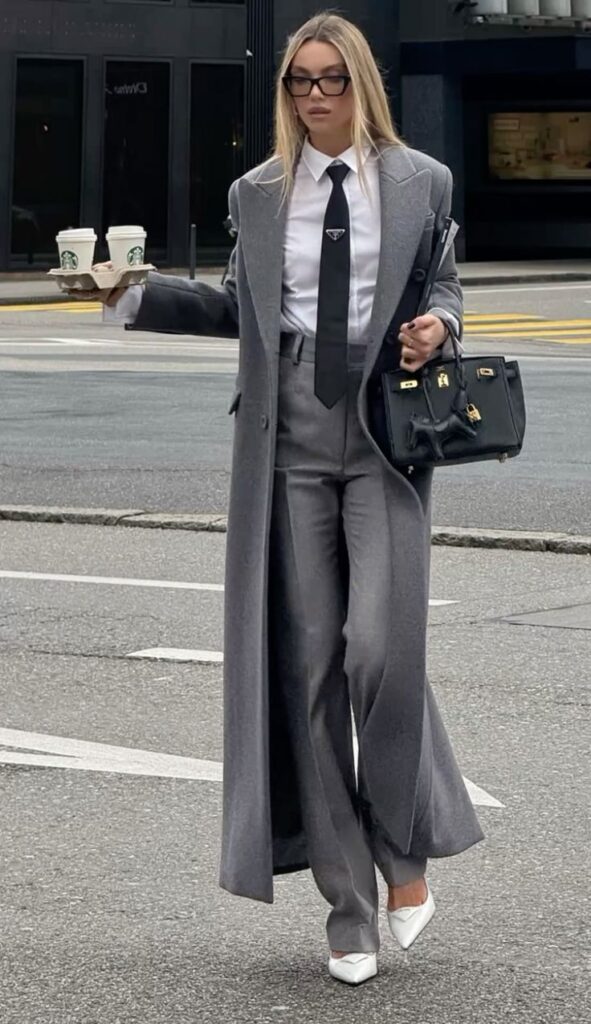
In industries like finance or law, business casual leans toward the formal side. Clothing needs to be neat, simple, and conservative, which is why many businesses turn to corporate clothing suppliers for reliable options. For men, this means dress shirts, chinos or dress pants, and polished shoes. Women often wear tailored pants or skirts with blouses and closed-toe shoes.
Colors are usually neutral, such as black, navy, or gray. Patterns, if worn, should be subtle, like thin stripes. Layers like cardigans or structured jackets help maintain a professional look.
Avoid casual fabrics like denim or overly bright colors. The focus is on professionalism and fitting within a stricter dress code while staying comfortable throughout the workday.
Common Mistakes and How to Avoid Them
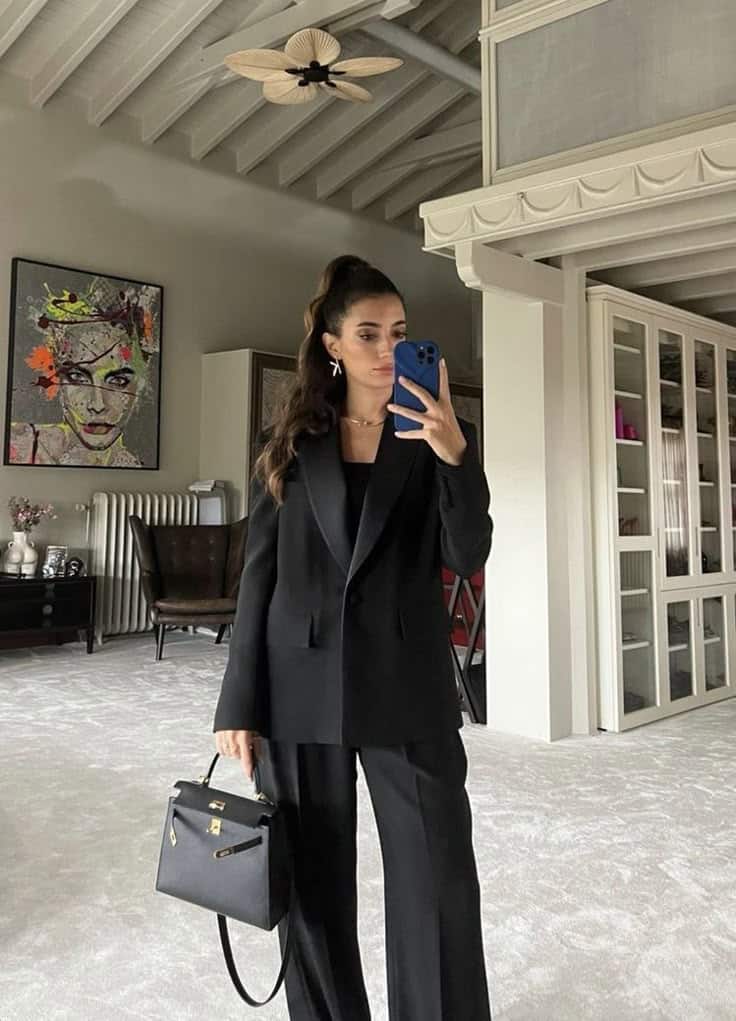
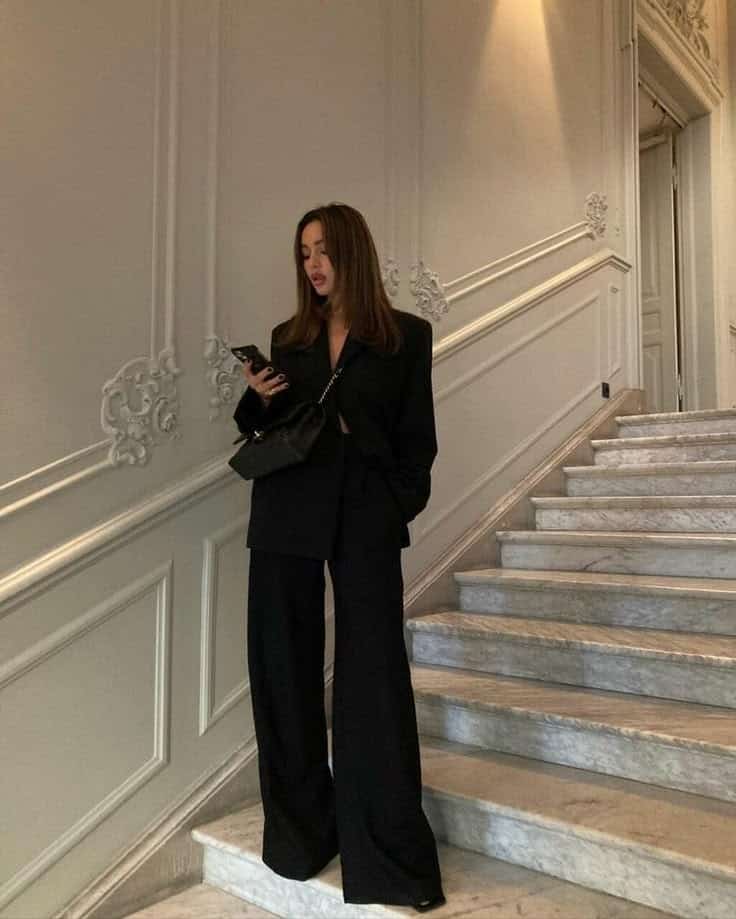
One common mistake is wearing clothes that are too casual. For example, sneakers or ripped jeans do not fit in a business casual setting. Instead, people should choose clean, simple shoes like loafers or flats.
Another mistake is wearing clothes that are too formal. A full suit or an evening dress is not needed. Balancing comfort and professionalism is key.
Not paying attention to fit can also create problems. Clothes that are too tight or too loose look unprofessional. Properly fitting clothes should flatter the body without being restrictive.
Mixing too many patterns or bright colors can be distracting. It’s better to stick to neutrals or one statement piece. This helps to keep the look polished.
Here is a quick guide to avoid mistakes:
| Mistake | How to Avoid |
|---|---|
| Too casual | Wear neat shoes, avoid ripped or old clothing |
| Too formal | Skip suits, opt for smart separates |
| Poor fit | Choose clothes that fit well |
| Overusing patterns/colors | Stick to simple colors and patterns |
By following simple rules, people can look appropriate and confident in business casual outfits.
- 7.4Kshares
- Facebook0
- Pinterest7.4K
- Twitter3
- Reddit0








